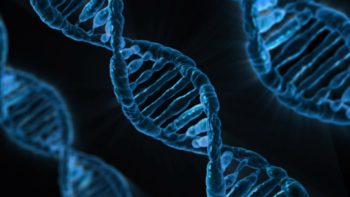A new study led by researchers at the National Institute and Alcohol Abuse and Alcoholism (NIAAA), part of the National Institutes of Health (NIH), identifies regions of the rat genome that are associated with a behavior that is highly predictive of addiction onset and progression. The region in the rat genome with the strongest association with the behavior corresponded to a human gene associated with substance use disorders. A report of the study is online in Proceedings of the National Academies of Science.
“This finding underscores the value of preclinical models in unraveling the complexity of addiction-related behaviors in humans,” said NIAAA Director George F. Koob, Ph.D. “It also highlights the power of genomics in identifying new genes and mechanisms for complex disorders such as addiction that are influenced by multiple genes. This supports the hypothesis that progress in elucidating the mechanisms of genetically complex addictions can be made by understanding specific aspects of addiction vulnerability.”
Addiction scientists have long known that diverse environmental and genetic factors play important roles in the vulnerability to addiction and how it progresses in an individual. Preclinical and clinical research has firmly established that the behavioral traits of novelty-seeking and impulsive behavior are predictive of addiction onset and progression across species.
In the current study, scientists at the University of Michigan in Ann Arbor led by Huda Akil, Ph.D., bred rats to exhibit either high or low degrees of arousal in response to novel environment. Dr. Akil is co-senior author of the study with David Goldman, M.D., NIAAA Clinical Director and Chief of the NIAAA Laboratory of Neurogenetics. First author Zhifeng Zhou, Ph.D. is also an intramural NIAAA scientist.
“The hyperarousal behavior is measured by measuring rats’ movement in a new environment,” explains Dr. Goldman. “We used genomic techniques to identify seven DNA regions that account for two-thirds of the genetic variability in the rats’ hyperarousal behavior. This is a surprising finding, because behaviors such as arousal are thought to be genetically complex and influenced by hundreds or even thousands of genes, rather than being strongly influenced by as few as seven genes.”
The region in the rat genome with the strongest association with the behavior contains the gene apba2. The researchers conducted genetic association analyses in humans with alcohol and other substance use disorders (SUD) to see if the human form of this gene, APBA2, was associated with novelty seeking and SUD. They found significant APBA2 genotype frequency differences between controls and cases with SUD, and association of this gene to novelty seeking. The authors conclude, “The converging evidences of our human genetic association analysis and the molecular and behavioral analyses of other studies link apba2 to response to novelty and at least to the early stage of drug-seeking behavior seen in externalizing disorders.”
Citation:
Zhou Z, et al (2019). Exploratory locomotion, a predictor of addiction vulnerability, is oligogenic in rats selected for this phenotype. PNAS. 116 (26): 13107-13115. DOI: 10.1073/pnas.1820410116
